ARFF Daily News
Published on:
Tuesday the 4 of February, 2025
Video shows wing of United Airlines plane catching fire during takeoff at Houston airport
Passengers were evacuated off United Airlines Flight 1382 after officials reported 'an issue with the engine'
By Stepheny Price
A passenger on board a United Airlines flight from Houston to New York captured wild video of the wing of the plane catching on fire during takeoff Sunday morning.
Passengers and crew on United Airlines Flight 1382 were evacuated off the plane at George Bush Intercontinental/Houston Airport due to a "reported engine issue," the Federal Aviation Administration (FAA) confirmed in a statement to Fox News Digital.
United Airlines also confirmed the incident and issued a statement saying that just after 8:30 a.m., on Sunday, Feb. 2, the crew of United Airlines Flight 1382 safely aborted its takeoff from the George Bush Intercontinental/Houston Airport in Texas due to a reported "engine issue."
A passenger on board the flight shared a video, obtained by FOX 26, of the chaos that happened inside the plane after seeing fire on the wing from a window.
"No, it's on fire," a passenger can be heard yelling.
"Oh my God, please, please get us out of here," another passenger can be heard saying.
The airline said passengers were deplaned on the runway via a combination of slides and stairs and were bused to the terminal.
The Houston Fire Department also responded to the incident as part of safety protocols and assisted in deboarding passengers. They did not put out the fire and said it was already out when units arrived on the scene.
Officials said there were no injuries and all passengers were moved to another plane to continue to their destination.
The plane, an Airbus A318, was traveling to New York LaGuardia Airport (LGA) with 104 passengers and five crew members, the airline confirmed.
The FAA said it will investigate the incident.
https://www.foxnews.com/us/video-shows-wing-united-airlines-plane-catching-fire-during-takeoff-houston-airport
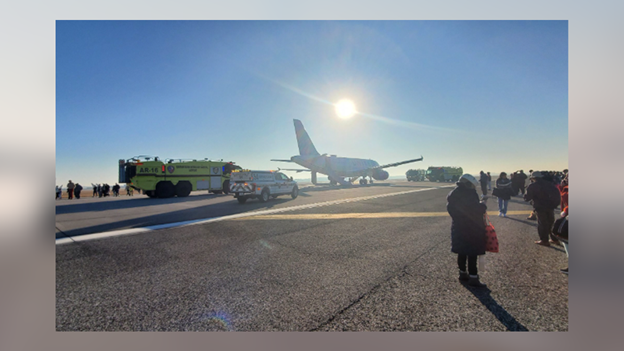
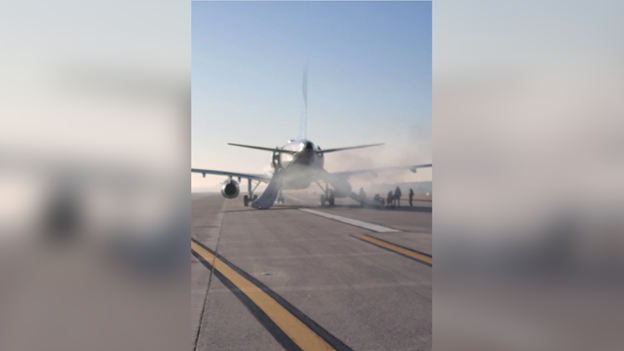
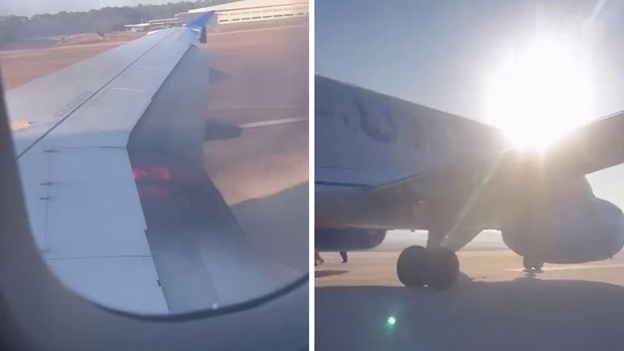
TSA releases images of 'suspicious device' that caused lockdown at Idaho Falls Regional Airport
By Nate Eaton, East Idaho News
IDAHO FALLS — The Transportation Safety Administration has released photos of the "suspicious device" that caused a scare at the Idaho Falls Regional Airport last month.
Turns out the device was an inert mortar found inside a passenger's checked bag on Jan. 11. Authorities detained passengers in a safe area of the terminal after the discovery and all flights were grounded. Police also closed the road to the airport.
The mortar was deemed safe and flights resumed after 30 minutes.
The TSA has released images of the device and said airport officers should be recognized for their "great catch."
"They should definitely be given a round of applause for spotting this mortar inside of a passenger's checked bag," a TSA Facebook post says.
"Thank goodness — it was inert, but this discovery prompted an evacuation and a number of flight delays. It's never the best idea to pack any sort of replica explosives or inert explosives in your checked bag or your carry-on. In fact, some might say you should be sure to leave the mortar at the door-tar."
TSA officers have seized other unusual objects at Idaho airports over the past year, including a slingshot, handsaw and sledgehammer. Last month, the agency released a list of the top 10 prohibited items found by security screening officers in carry-on luggage at five different Idaho airports in 2024.
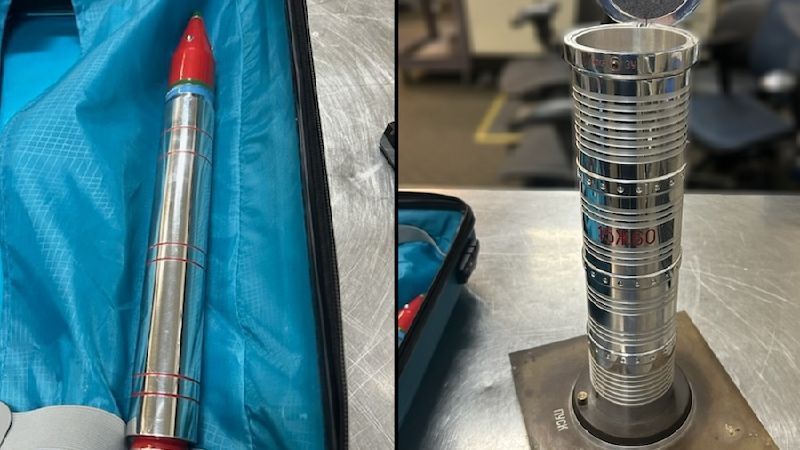
D.C. Airport Employees Charged After Plane Crash Videos Allegedly Leaked To CNN
The footage offered the clearest view of the collision over the Potomac River that killed 67 people.
Two airport employees have been charged after allegedly leaking to CNN video footage of last week’s fatal plane and helicopter crash in Washington, D.C.
The two videos aired by CNN on Friday offered the clearest views of the Jan. 29 collision over the Potomac River that killed 67 people.
American Airlines Flight 5342 is seen descending into Ronald Reagan Washington National Airport as the Army Black Hawk helicopter travels straight into it, creating an explosion in the sky.
Lamine Mbengue, 21, of Rockville, Maryland, was arrested Friday and charged with computer trespass for “making an unauthorized copy of Airports Authority records,” a spokesperson for the Metropolitan Washington Airports Authority said in a statement.
He was booked into the Arlington County Adult Detention Center and released on his own recognizance.
Jonathan Savoy, 45, of Upper Marlboro, Maryland, also was charged Sunday with computer trespass. He was released on a summons by the magistrate.
Neither had an attorney listed as representing them. A spokesperson declined to say whether Mbengue and Savoy remain employed.
Salvage crews began removing some of the crash wreckage from the Potomac on Monday, recovering an engine and pieces of the plane’s fuselage.
Work to recover the helicopter’s remains will begin once the airplane has been recovered, said the National Transportation Safety Board, which is overseeing the investigation.
https://www.huffpost.com/entry/airport-employees-charged-leaked-crash-video_n_67a21299e4b0cf0f0a35e75f
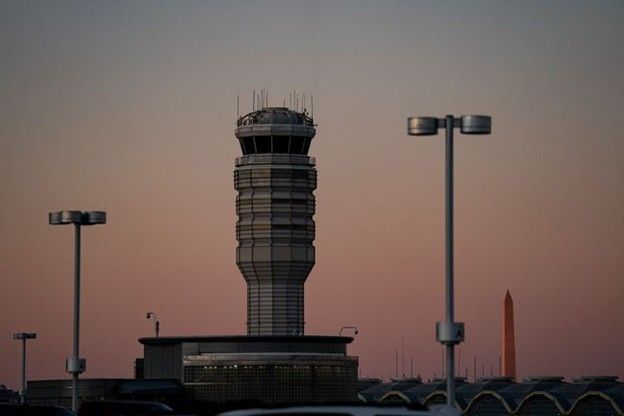
Today in History
66 Years ago today: On 3 February 1959 American Airlines flight AA320, a Lockheed L-188 Electra, crashed into the sea while on approach to New York-La Guardia Airport, NY, USA, killing 65 occupants; 8 survived the accident.
Date: Tuesday 3 February 1959
Time: 23:56
Type: Lockheed L-188A Electra
Owner/operator: American Airlines
Registration: N6101A
MSN: 1015
Year of manufacture: 1958
Total airframe hrs: 302 hours
Engine model: Allison 501-D13
Fatalities: Fatalities: 65 / Occupants: 73
Other fatalities: 0
Aircraft damage: Destroyed, written off
Category: Accident
Location: 1,5 km NE off New York-La Guardia Airport, NY (LGA) - United States of America
Phase: Approach
Nature: Passenger - Scheduled
Departure airport: Chicago-Midway Airport, IL (MDW/KMDW)
Destination airport: New York-La Guardia Airport, NY (LGA/KLGA)
Investigating agency: CAB
Confidence Rating: Accident investigation report completed and information captured
Narrative:
American Airlines Flight 320 was a scheduled service from Chicago-Midway Airport, Illinois, USA to New York-La Guardia Airport, New York. The aircraft, a Lockheed L-188A Electra, was off the ground at 21:43 hours and estimated one hour and forty-two minutes en route to New York.
At 23:27, Flight 320 made its first radio contact with La Guardia approach control. Nearing La Guardia Airport, the flight was given vectors for an ILS backcourse approach to runway 22.
Weather was reported to the crew as follows: "four hundred overcast; two miles visibility, light rain and fog".
At 23:53, the flight contacted La Guardia tower, stating they had passed New Rochelle. The flight was subsequently cleared to continue its approach to runway 22. Last radio contact was at 23:55:27 when the flight confirmed clearance to land. The Lockheed Electra aircraft descended until it struck the water seven seconds later, some 5000 feet short of the runway and 600 feet to the right of the extended centreline. Ground speed on impact was 150 mph and undercarriage and flaps were extended. The wreckage sank 10 m deep in the water of the East River.
The investigation board noted that American Airlines requested certification of their L-188A Electra aircraft for flight below 25,000 feet under which limitation it was unnecessary to install flight recorders. This was done in view of the cost of procurement, installation, and maintenance of flight recorders at the time.
The board stated: "a flight recorder in this aircraft would have enabled us to identify the causal factors involved in this accident with far greater precision".
PROBABLE CAUSE: "The Board determines the probable cause of this accident was premature descent below landing minimums which was the result of preoccupation of the crew on particular aspects of the aircraft and its environment to the neglect of essential flight instrument references for attitude and height above the approach surface.
Contributing factors were:
1. Limited experience of the crew with the aircraft type;
2. Faulty approach technique in which the autopilot was used in the heading mode to or almost to the surface;
3. Erroneous setting of the captain's altimeter;
4. Marginal weather in the approach area;
5. Possible misinterpretation of altimeter and rate of descent indicator; and
6. Sensory illusion with respect to height and attitude resulting from visual reference to the few lights existing in the approach area."

Mailing Address
Subscribe to our newsletter
Contact Us
We will get back to you as soon as possible.
Please try again later.
